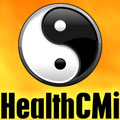New research concludes that acupuncture is an “effective therapy for CVS (cerebrovascular vasospasm) after subarachnoid hemorrhage.” A subarachnoid hemorrhage is bleeding between the brain and the tissues that cover it, often caused by an aneurysm. Cerebral vasospasm onset usually takes 4 - 10 days to develop following a subarachnoid hemorrhage. The cerebral blood vessel spasms may lead to vasoconstriction and subsequent cerebral ischemia, which causes necrosis and potentiates a stroke.
A total of sixty cases were divided into two groups of thirty. Group 1 received conventional treatment with nimodipine and group 2 received acupuncture combined with the conventional treatment. Nimodipine is a calcium channel blocker with selectivity for cerebral vasculature that binds to L-type voltage-gated calcium channels.
The total treatment time for both groups was three weeks. The acupuncture group received acupuncture at Baihui (GV20, Du20) and Fengchi (GB20). Baihui is located at the vertex midline, 8 cun posterior to the glabella. Baihui, translated as hundred meetings, is the meeting point of the governing channel with the urination bladder, gallbladder, liver and sanjiao channels. Baihui is also a Sea of Marrow point. Traditionally, Baihui is known to benefit the brain, quell the wind and clear the senses. Fengchi, translated as wind pool, is the meeting point of the sanjiao and gallbladder channels with the yang linking and yang motility vessels. It is located below the occiput between the sternomastoid and trapezius muscle origins. Fengchi is traditionally used to benefit the head, quell the wind and clear the senses. The Ming dynasty work, the Great Compendium of Acupuncture and Moxibustion, notes that combining Fengchi (GB20) with Baihui (Du20) is recommended for the treatment of head wind.
The researchers note that improvement in the acupuncture group “was superior to that in the conventional treatment group.” Results were tabulated based on transcranial Doppler (TCD) and computed tomography perfusion (CT perfusion) findings. TCD measured significant blood flow improvement from acupuncture treatment to major blood vessels of the brain: the anterior cerebral artery (ACA), the middle cerebral artery (MCA), the posterior cerebral artery (PCA). CT perfusion recorded significant benefits from acupuncture treatment to cerebral blood flow (CBF), volume (CBV) and mean transit time (MTT). The researchers note, “Acupuncture at Baihui (GV 20) and Fengchi (GB 20) down-regulates the peak values or upregulates the valley values.” In every parameter (ACA, MCA, PCA, CBF, CBV, MTT), the results achieved in the acupuncture plus medication group was superior to that of the conventional treatment only group.

Reference:
Zhongguo Zhen Jiu. 2012 Mar;32(3):193-7. Observation of clinical efficacy of acupuncture for cerebral vasospasm after embolization of ruptured aneurysms]. Jiang YZ, Li C, Xu JY, Lu YZ, Xu R, Han B, Lu WH. Department of Neurosurgery, Wuxi Integrated Chinese and Western Medicine Hospital, Jiangsu Province, China.

